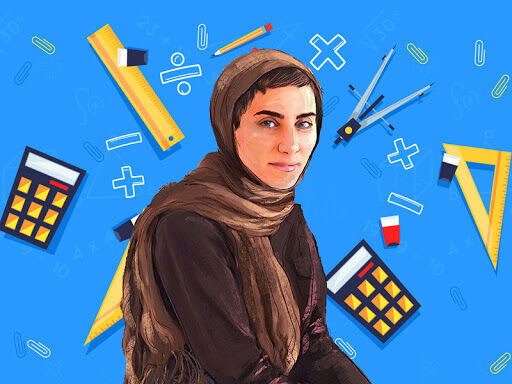ID :
565156
Mon, 05/11/2020 - 13:54
Auther :
Shortlink :
https://oananews.org//node/565156
The shortlink copeid
Mirzakhani unrivalled role model for world's women

Tehran, May 11, IRNA – Birthdate of Iran’s Maryam Mirzakhani (May 12) has been named Women in Mathematics Day by the International Mathematics Union. Any women in the world follow her footsteps to have great achievements and become another Maryam Mirzakhani.
Mirzakhani, a professor Stanford University and the first Iranian and the first women ever to win the Fields Medal, also known as the Nobel Prize of mathematics, passed away on 14 July 2017 at the age of 40 at a hospital in the US.
In 1994, Mirzakhani won a gold medal in the Hong Kong International Mathematical Olympiad, to be the first female Iranian student to receive a gold medal. In the 1995 Toronto International Mathematical Olympiad, she became the first Iranian student to receive a perfect score and to win two gold medals.
Mirzakhani receiving a prize from former President Ali-Akbar Hashemi-Rafsanjani
She obtained her BSc in mathematics (1999) from Sharif University of Technology, Tehran. She went to the US and got a PhD from Harvard University in 2004.
Mirzakhani (b. May 3, 1977) was diagnosed with breast cancer in 2013, a year before she set the record of the first ever woman to win the prestigious Fields Medal in mathematics.
When still an undergraduate, she proposed a simple procedure for Shor's algorithm that was published in American Mathematical Society’s monthly journal.
Curtis T. McMullen, a professor at Harvard and a Fields Medal winner, said Mirzakhani asked numerous questions and took fast notes in Farsi. Mirzakhani managed to receive a PhD from Harvard in 2004. Then she started teaching at Princeton University and, later, in Stanford University.
In 2005, she was named as one of the Brilliant 10 in the US by Popular Science magazine.
In addition to the Fields Medal and world Olympiad gold medal, she won Blumenthal Award (2009), Satter Prize (2013), and Clay Research Award (2014).
In 1999, at Harvard University, she tackled a problem that had stymied many a mathematician: calculating the volumes of moduli spaces of curves-geometric objects whose points each represent a different hyperbolic surface. Some hyperbolic surfaces are oddly shaped, like doughnuts or amoebas. Mathematicians had been trying to calculate the volume of all possible variants of these forms. Mirzakhani found a new way, using a strategy that involved drawing a series of loops on the surface of the shapes and calculating their lengths, wrote Popular Science.
In 2016, she was the first Iranian-American to become a member of the National Academy of Sciences.
Her death in 2017 was an end to her. One of the seven most influential woman scientists according to the UN, she is a symbol of breaking restrictions of women in the world of mathematics.
The head of Mathematics Department of Alzahra University, a female-only state university, Nasrin Soltankhah told IRNA that this year, due to the outbreak of coronavirus the ceremony to commemorate Maryam Mirzakhani will be held online on May 11.
Soltankhah said the day was commemorated in 100 points in the world in 2019.
She said Mirzakhani’s professor at Sharif University and her family have founded Mirzakhani Foundation to encourage more women to study mathematics and to find mathematics geniuses like Maryam Mirzakhani.
Follow us on Twitter @IrnaEnglish





